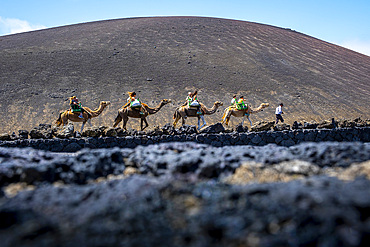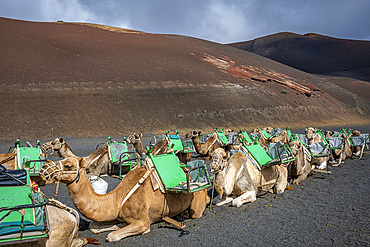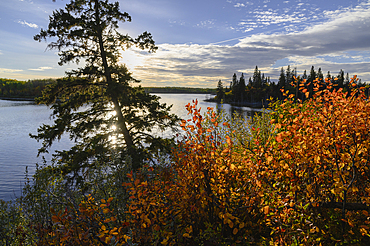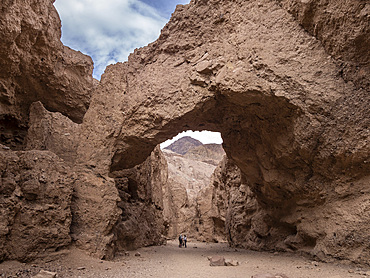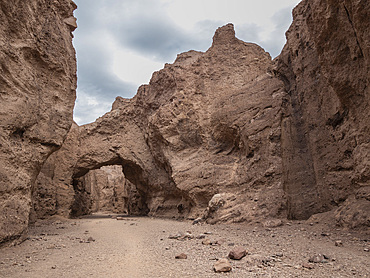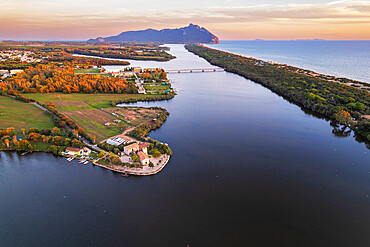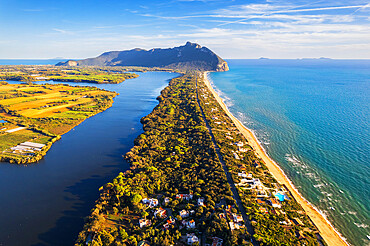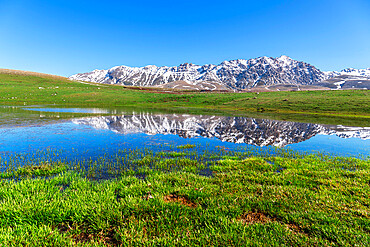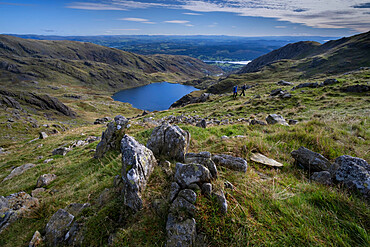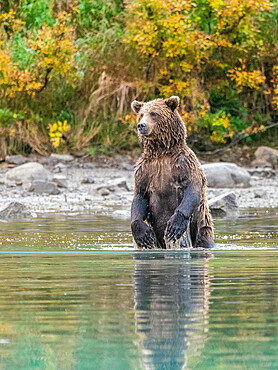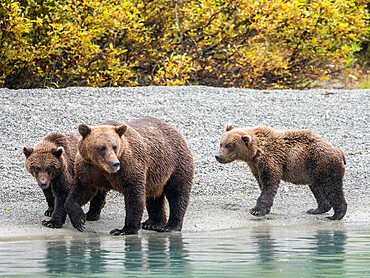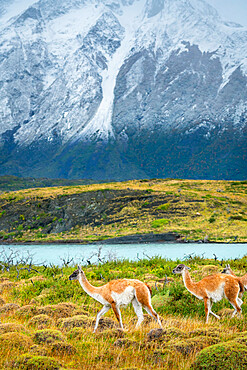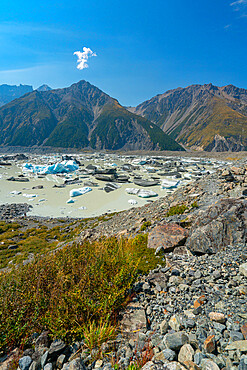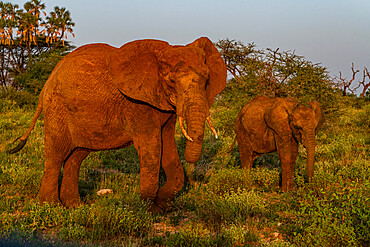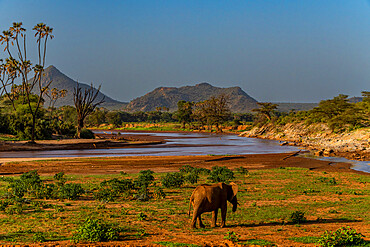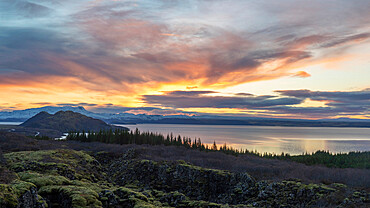Recent searches
Loading...
1242-516 - Strathcona National Park, Vancouver Island, British Columbia, Canada, North America
1350-6503 - Teide and Roque Cinchado, in Los Roques de Garcia, volcanic rock formations in Teide national park, Tenerife, Canary Islands, Spain
1350-6502 - Teide, volcanic rock formations, and retama (Spartocytisus supranubius) in Teide national park, Tenerife, Canary Islands, Spain
1350-6501 - Teide, volcanic rock formations, and retama (Spartocytisus supranubius) in Teide national park, Tenerife, Canary Islands, Spain
1350-6488 - Tourists riding camels, in Timanfaya National Park, Lanzarote, Canary Islands, Spain
1350-6487 - Echadero de Camellos, Camels wait for the next ride with tourists, Timanfaya National Park, Ruta de Los Volcanes, Lanzarote, Spain
1350-6678 - Strawberry Poison Frog (Dendrobates pumilio), adult, Bastimentos National Park, Bocas del Toro, Panama. The strawberry poison frog or strawberry poison-dart frog (Oophaga pumilio or Dendrobates pumilio) is a species of small amphibian poison dart frog found in Central America. It is common throughout its range, which extends from eastern central Nicaragua through Costa Rica and northwestern Panama. The species is often found in humid lowlands and premontane forest, but large populations are also found in disturbed areas such as plantations. The strawberry poison frog is perhaps most famous for its widespread variation in coloration, comprising approximately 15���30 color morphs, most of which are presumed to be true-breeding. O. pumilio, while not the most poisonous of the dendrobatids, is the most toxic member of its genus. The species is most diverse in Panama with varieties in vivid shades of all red, orange, blue, yellow or green, green and yellow, white with red, orange or black and spotted varieties. The most colorful mix is found in Isla Bastimentos Marine National Park though not all in one place. Colors vary by location. A beach on the north side of the island is named after the species. Two of Southern Explorations' Panama tours visit red frog habitat. Both the eight-day Panama Adventure trip and eleven-day Panama Highlights trip spend time in Isla Bastimentos Marine National Park and the former also goes to Red Frog Beach.
The red frog is not as poisonous as some of its cousins and is not a threat to humans. It subsists on a diet of ants that dine on poisonous plants, providing the red frog its protective skin toxin. Males attract females with a loud quick chirp. To hear the distinctive sound before you depart on your Panama tours, go to the University of Michigan Museum's biodiversity website (www.animaldiversity.ummz.umich.edu.) After birth, the tadpoles climb aboard the mother who deposits them in different protected areas where she retu
1365-13 - Torres del Paine National Park, Patagonia, Chile, South America
1359-92 - Full frame abstract shot of natural rock formations at Zabriskie Point at sunrise, Death Valley National Park, California, USA
1359-71 - Gorge with natural arch by Navajo Loop Trail, Bryce Canyon National Park, Utah, USA
1241-377 - Sunset in autumn at Astotin Lake, Elk Island National Park, Alberta, Canada, North America
1241-378 - Sunset in autumn at Astotin Lake, Elk Island National Park, Alberta, Canada, North America
1241-376 - Sunset in autumn at Astotin Lake, Elk Island National Park, Alberta, Canada, North America
1112-7130 - A view of Natural Bridge Canyon in Death Valley National Park, California, United States of America, North America
1112-7131 - A view of Natural Bridge Canyon in Death Valley National Park, California, United States of America, North America
1184-7566 - Aerial of the Lavena Peninsula, Bouma National Park, Taveuni, Fiji, South Pacific, Pacific
1184-7564 - Lush jungle in the Bouma National Park, Taveuni, Fiji, South Pacific, Pacific
1184-7563 - White sand beach, Bouma National Park, Taveuni, Fiji, South Pacific, Pacific
1361-45 - Aerial view of Sabaudia's lake and mountain, Circeo National Park, Sabaudia, Pontine flats, Latina province, Latium (Lazio), Italy, Europe
1361-46 - Aerial view of Sabaudia's coast and mountain, Circeo National Park, Sabaudia, Pontine flats, Latina province, Latium (Lazio), Italy, Europe
1361-44 - Aerial view of Sabaudia's church and lake at dawn, Circeo National Park, Pontine flats, Latine province, Latium (Lazio), Italy, Europe
1361-37 - Aerial view of the coast and lakes of Circeo mountain at sunset, Circeo National Park, Latina province, Latium (Lazio), Italy, Europe
1361-29 - Sandy coast and lakes of Sabaudia town seen from above, Circeo National Park, Latina province, Latium (Lazio), Italy, Europe
1361-34 - Spring thaw with lake reflection on the Campo Imperatore Plateau, Gran Sasso National Park, Apennines, Abruzzo, Italy, Europe
1361-38 - Rear view of a man enjoying the view towards the peak of Circeo, Circeo National Park, Latina province, Latium (Lazio), Italy, Europe
1237-507 - Ullswater, Lake District National Park, UNESCO World Heritage Site, Cumbria, England, United Kingdom, Europe
860-291341 - Dead acacia tree on the background of sand dunes and stripes of morning fog. A very rare natural phenomenon for these places. Stunning light, color and shape. Sossusvlei. Deadvlei. Namib-Naukluft National Park. Landscapes of Namibia. Africa.
1353-279 - Summit Cairn on Yew Crag above misty Ullswater at sunrise, Gowbarrow Fell, Lake District National Park, UNESCO World Heritage Site, Cumbria, England, United Kingdom, Europe
1353-275 - Loughrigg Tarn, Elter Water and Wetherlam from Loughrigg Fell in autumn, Lake District National Park, UNESCO World Heritage Site, Cumbria, England, United Kingdom, Europe
1353-276 - Walkers on Little How Crags above Levers Water on The Old Man of Coniston, Lake District National Park, UNESCO World Heritage Site, Cumbria, England, United Kingdom, Europe
1353-278 - Elter Water, Wetherlam and Tilberthwaite Fells from Loughrigg Fell in autumn, Lake District National Park, UNESCO World Heritage Site, Cumbria, England, United Kingdom, Europe
1353-273 - Rydal Water backed by Nab Scar and Heron Pike from Loughrigg Fell in autumn, Lake District National Park, UNESCO World Heritage Site, Cumbria, England, United Kingdom, Europe
1353-274 - Elter Water, Wetherlam and Tilberthwaite Fells from Loughrigg Fell in autumn, Lake District National Park, UNESCO World Heritage Site, Cumbria, England, United Kingdom, Europe
1353-272 - Britain's Favourite View, Wastwater in autumn, Lake District National Park, UNESCO World Heritage Site, Cumbria, England, United Kingdom, Europe
1353-267 - Elter Water, Wetherlam and The Tilberthwaite Fells from Loughrigg Fell in autumn, Lake District National Park, UNESCO World Heritage Site, Cumbria, England, United Kingdom, Europe
1112-6870 - A young brown bear (Ursus arctos) with a dead salmon at Lake Clark National Park and Preserve, Alaska, United States of America, North America
1112-6871 - Mother brown bear (Ursus arctos) standing and looking for salmon, Lake Clark National Park and Preserve, Alaska, United States of America, North America
1112-6872 - A mother brown bear (Ursus arctos) with her cubs on the beach in Lake Clark National Park and Preserve, Alaska, United States of America, North America
1112-6868 - A young brown bear (Ursus arctos) fishing in the water at Lake Clark National Park and Preserve, Alaska, United States of America, North America
1112-6867 - A young brown bear (Ursus arctos) along the shoreline at Lake Clark National Park and Preserve, Alaska, United States of America, North America
1241-350 - Wild goldenrod (Solidago) flowers in summer at Astotin Lake, Elk Island National Park, Alberta, Canada, North America
1359-40 - Guanacos (Lama guanicoe) with mountains in background, Torres del Paine National Park, Patagonia, Chile, South America
1359-23 - Mountains around Nordenskjold lake, Torres del Paine National Park, Patagonia, Chile, South America
1359-36 - Los Cuernos peaks hiding in fog, Torres del Paine National Park, Patagonia, Chile, South America
1359-47 - Guanaco (Lama guanicoe) on shore of Lago Azul, Torres del Paine National Park, Patagonia, Chile, South America
1359-30 - Large chunks of ice broken off Glaciar Grey floating in Lago Grey, Torres del Paine National Park, Patagonia, Chile, South America
1359-43 - Scenic view of Los Cuernos mountain peaks from shore of Lago Pehoe, Torres del Paine National Park, Patagonia, Chile, South America
1359-46 - Lago Grey with icebergs, Torres del Paine National Park, Patagonia, Chile, South America
1359-49 - Scenic view of Los Cuernos mountain peaks from shore of Lago Pehoe, Torres del Paine National Park, Patagonia, Chile, South America
1359-38 - Los Cuernos peaks hiding in fog, Torres del Paine National Park, Patagonia, Chile, South America
1359-7 - Tasman Lake, Aoraki/Mount Cook National Park, UNESCO World Heritage Site, Canterbury, South Island, New Zealand, Pacific
1359-6 - Tasman Lake, Aoraki/Mount Cook National Park, UNESCO World Heritage Site, Canterbury, South Island, New Zealand, Pacific
799-4421 - Mountain reflections in the tranquil waters of Tenaya Lake in Yosemite National Park, UNESCO World Heritage Site, California, United States of America, North America
741-6125 - Eurasian coot (Fulica atra), Donana National & Natural Park, Andalusia, Spain.
741-6128 - White-backed Vulture (Gyps africanus) in flight, Donana National and Natural Park, Andalusia, Spain, Europe
741-6117 - Great Flamingos (Phoenicopterus roseus), El Rocio, Donana National and Natural Park, Andalusia, Spain, Europe
741-6120 - European Bee-eater (Merops apiaster), Donana National and Natural Park, Andalusia, Spain, Europe
741-6127 - Marbled Teal (Marmaronetta angustirostris), Donana National and Natural Park, Andalusia, Spain, Europe
741-6121 - Eurasian Spoonbill (Platalea leucorodia), Donana National and Natural Park, Andalusia, Spain, Europe
741-6119 - White Stork (Ciconia ciconia), Donana National and Natural Park, Andalusia, Spain, Europe
741-6123 - White Stork (Ciconia ciconia), Donana National and Natural Park, Andalusia, Spain, Europe
741-6126 - Great Flamingos (Phoenicopterus roseus), Donana National and Natural Park, Andalusia, Spain, Europe
741-6129 - White-backed Vulture (Gyps africanus) in flight, Donana National and Natural Park, Andalusia, Spain, Europe
741-6130 - Black-winged stilt (Himanthopus himantophus), Donana National and Natural Park, Andalusia, Spain, Europe
741-6124 - White Stork (Ciconia ciconia), Donana National and Natural Park, Andalusia, Spain, Europe
741-6122 - Glossy ibis (Plegadis falcinellus) in flight, Donana National and Natural Park, Andalusia, Spain, Europe
741-6118 - Red deer (Cervus elaphus hispanicus), Donana National and Natural Park, Andalusia, Spain, Europe
1184-7137 - Aerial of the Lower Kolsai Lake, Kolsay Lakes National Park, Tian Shan mountains, Kazakhstan, Central Asia, Asia
1184-7142 - Aerial of the Kaindy Lake with its dead trees, Kolsay Lakes National Park, Tian Shan mountains, Kazakhstan, Central Asia, Asia
1184-7141 - Aerial of the Lower Kolsai Lake, Kolsay Lakes National Park, Tian Shan mountains, Kazakhstan, Central Asia, Asia
1184-7138 - Aerial of the Kaindy Lake with its dead trees, Kolsay Lakes National Park, Tian Shan mountains, Kazakhstan, Central Asia, Asia
1184-7140 - Aerial of the Kaindy Lake with its dead trees, Kolsay Lakes National Park, Tian Shan mountains, Kazakhstan, Central Asia, Asia
1184-7139 - Aerial of the Kaindy Lake with its dead trees, Kolsay Lakes National Park, Tian Shan mountains, Kazakhstan, Central Asia, Asia
1184-7143 - Aerial of the Kaindy Lake with its dead trees, Kolsay Lakes National Park, Tian Shan mountains, Kazakhstan, Central Asia, Asia
1184-7129 - Aerial of the Imantau Lake, Imantau, Kokshetau National Park, Northern Kazakhstan, Central Asia, Asia
1184-7130 - Aerial of the Imantau Lake, Imantau, Kokshetau National Park, Northern Kazakhstan, Central Asia, Asia
1184-7131 - Aerial of the Imantau Lake, Imantau, Kokshetau National Park, Northern Kazakhstan, Central Asia, Asia
1184-7097 - African elephants (Loxodonta), Buffalo Springs National Reserve, Samburu National Park, Kenya, East Africa, Africa
1184-7095 - African elephant on the Ewaso Ng'iro river flowing between Buffalo Springs National Reserve and Samburu National Park, Kenya, East Africa, Africa
1113-107331 - Delicate Arch, Arches National Park, Moab, Utah, United States of America,
1113-107330 - Delicate Arch, Arches National Park, Moab, Utah, United States of America,
1311-467 - A hoodoo near a natural Spring west of Pintado Point in Petrified Forest National Park Arizona called the Guardian.
1353-166 - Cwm Dyli, Llyn Llydaw, Mount Snowdon and the Snowdon Horseshoe from The Horns, Snowdonia National Park, North Wales, United Kingdom, Europe
1353-171 - Llyn Gwynant and the Gwynant Valley backed by Yr Aran, Nant Gwynant, Snowdonia National Park, North Wales, United Kingdom, Europe
1353-167 - Llyn Cwmffynnon and distant Glyder Fach, The Glyderau, Snowdonia National Park, North Wales, United Kingdom, Europe
1353-169 - Gloyw Lyn Lake and Rhinog Fawr, the Rhinogydd (Rhinogs), Snowdonia National Park, North Wales, United Kingdom, Europe
1353-163 - Llyn Ogwen, Cwm Idwal and the Glyderau Mountains, Snowdonia National Park, North Wales, United Kingdom, Europe
1353-165 - Walker looking out over Cwm Dyli and Llyn Llydaw to Snowdon and the Snowdon Horseshoe, Snowdonia National Park, North Wales, United Kingdom, Europe
1353-170 - First light on the Snowdon Range over Lynnau Mymbyr, near Capel Curig, Snowdonia National Park, North Wales, United Kingdom, Europe
741-6115 - Thingvellir National Park, UNESCO World Heritage Site, Iceland, Polar Regions
746-92256 - Monti Sibillini National Park, Flowering Pian Grande June, Castelluccio di Norcia, Umbria, Italy, Europe
746-92258 - Monti Sibillini National Park, Flowering Pian Grande, July, Castelluccio di Norcia, Umbria, Italy, Europe
746-92259 - Monti Sibillini National Park, Flowering Pian Grande, July, Castelluccio di Norcia, Umbria, Italy, Europe
746-92340 - Monti Sibillini National Park, Church of the Madonna della Cona, Castelsantangelo sul Nera, Marche, Italy, Europe
746-92257 - Monti Sibillini National Park, Flowering Pian Grande, Castelluccio di Norcia, Umbria, Italy, Europe
746-92212 - Monte Conero National Park, Seascape, Sunrise, Portonovo, Ancona, Marche, Italy, Europe
746-92385 - Monti Sibillini National Park, Winter Landscape, View from Bolognola, Marche, Italy, Europe
1184-6776 - Lake in the sand dunes of Lencois Maranhenses National Park, Maranhao, Brazil, South America
1184-6779 - Aerial of freshwater lakes between huge sand dunes in the Lencois Maranhenses National Park, Maranhao, Brazil, South America
1184-6777 - Sand dunes rising out of the green jungle, Lencois Maranhenses National Park, Maranhao, Brazil, South America




